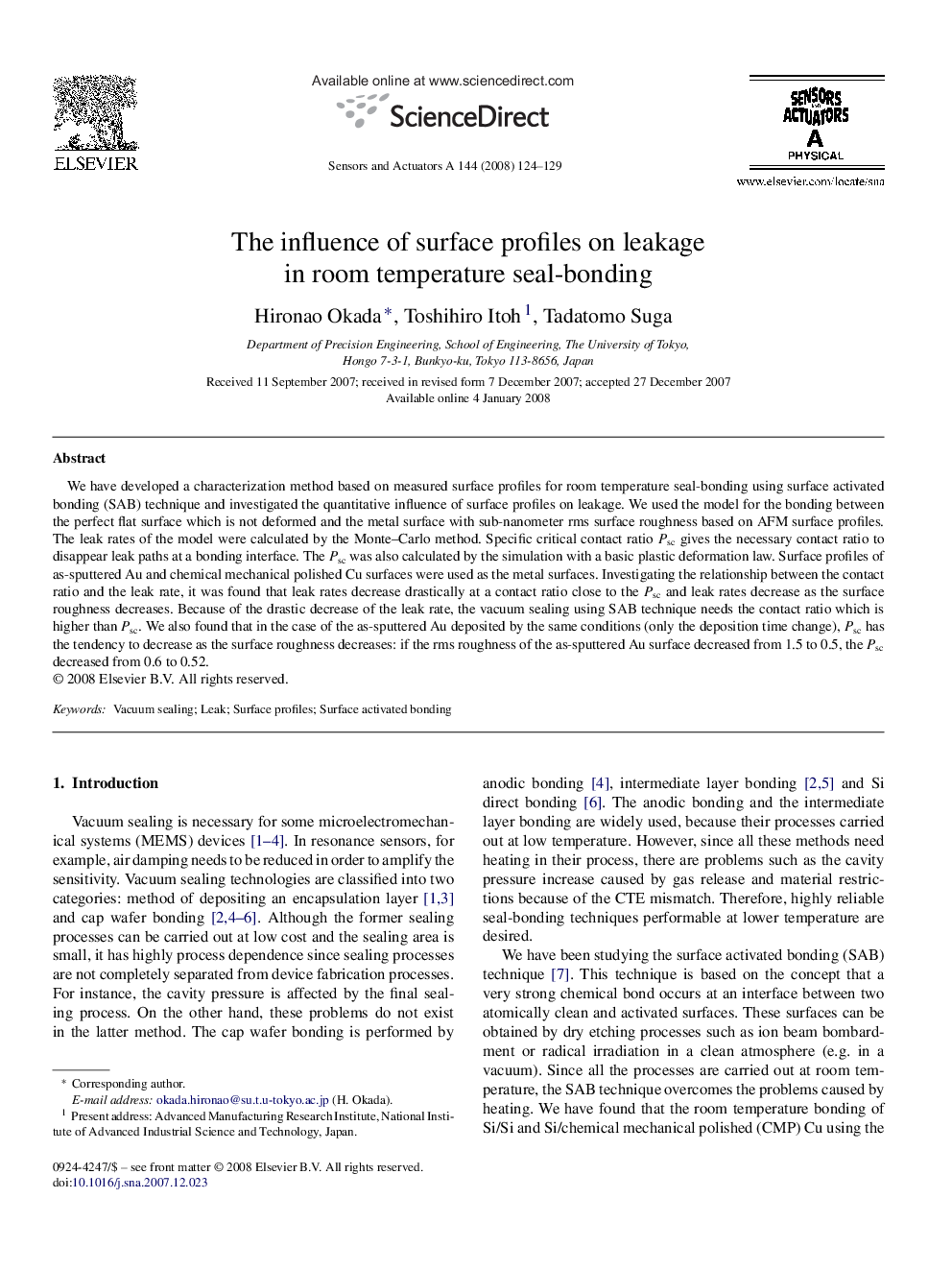| Article ID | Journal | Published Year | Pages | File Type |
|---|---|---|---|---|
| 737231 | Sensors and Actuators A: Physical | 2008 | 6 Pages |
We have developed a characterization method based on measured surface profiles for room temperature seal-bonding using surface activated bonding (SAB) technique and investigated the quantitative influence of surface profiles on leakage. We used the model for the bonding between the perfect flat surface which is not deformed and the metal surface with sub-nanometer rms surface roughness based on AFM surface profiles. The leak rates of the model were calculated by the Monte–Carlo method. Specific critical contact ratio Psc gives the necessary contact ratio to disappear leak paths at a bonding interface. The Psc was also calculated by the simulation with a basic plastic deformation law. Surface profiles of as-sputtered Au and chemical mechanical polished Cu surfaces were used as the metal surfaces. Investigating the relationship between the contact ratio and the leak rate, it was found that leak rates decrease drastically at a contact ratio close to the Psc and leak rates decrease as the surface roughness decreases. Because of the drastic decrease of the leak rate, the vacuum sealing using SAB technique needs the contact ratio which is higher than Psc. We also found that in the case of the as-sputtered Au deposited by the same conditions (only the deposition time change), Psc has the tendency to decrease as the surface roughness decreases: if the rms roughness of the as-sputtered Au surface decreased from 1.5 to 0.5, the Psc decreased from 0.6 to 0.52.
